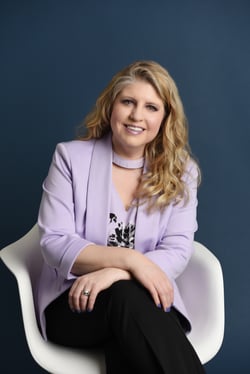Here’s a great read. See below for a story from Sabina Wex of Toronto, grand prize winner of the Grade 12 Student Essay Writing Contest that was part of this year’s Credit Education Week Canada (CEWC). The essay was written in response to the question: “What is the dumbest thing I ever did with my money and what did I learn from it?” And please go to http://www.cewc.ca/Contests/contests for a full list of this year’s essay contest winners who shared a prize pool of scholarships running from $1,000 to $5,000.
Let me just add, CEWC was another terrific success for 2012. Themed around the idea of “Money Resolutions,” the week brought together people, communities, organizations, special guest speakers, and generous sponsors from across the land for events and activities that were thought provoking, fun, and informative. I’d like once more to thank all sponsors of CEWC, as well as everyone who participated in the event. We resolved to make this year’s CEWC a bang-up success, and we stuck to that resolution.
***
A Hollow Head.
By Sabina Wex
I was going to be a mom. I would have to raise a baby. I would teach it how to walk, talk, eat and pee propely.
I couldn’t wait to tell my dad.
“Dad,” I said, “I need to tell you something.”
He looked at me with wide eyes and nodded for me to proceed. I told him about my predicament.
“No,” Dad replied. “No, no, no, no way. That costs $300!”
“But, Dad,” I whined, “I have to have a baby! I don’t care if it’s $300, I’ll buy it myself.”
He grunted and walked away.
Though I said I would buy it myself, I had never thought of that until then. Yes, I, all by myself, will buy the Katie doll, the doll that you teach to walk, talk, eat and pee properly, the doll I had seen 20 ads for in the past two days. But how much money did a baby-obsessed eight-year-old girl have? I checked my bank account book (back in the days before online banking existed) and saw I had $202 in my account. Taking out a notepad and paper, I calculated that I only needed $98 more to get the Katie doll. I knew I could do it.
Luckily, it was almost summer time, so I asked my dad if I could do a Kool-Aid stand outside our building (we had done them before and they had been quite successful). He agreed, and I got busy planning my money-making strategy. That year I decided not only to sell Kool-Aid, but also cookies and my artwork.
I only had a few weeks until summertime rolled around, so I began painting pictures like Picasso on Red Bull. I bought six rolls of Pillsbury chocolate chip cookie dough and four jars of Kool-Aid mix to charm the masses with an excessive amount of food so they would donate to my worthy cause.
Finally, the big day arrived. I began at 11 a.m. and stayed out until 2 p.m. My profit was $50. Pretty good for selling Kool-Aid and cookies at 50 cents per piece, and artwork for $1 to $2, but not good enough for the Katie doll. I needed more.
My neighbours were kind enough to give me odd jobs, such as rolling their pennies, feeding their cats, taking out their garbage and even giving them pedicures (don’t ever let an eight-year-old convince you that they are a fantastic pedicurist). I saved up my weekly $2.50 allowances and picked up every penny I found on the street. That entire summer I dreamed of Katie: how close we would become because I would be such a nurturing mother, how she would stay my little baby forever. My maternal fantasy got me through my own personal recession.
By the end of the summer, my water broke. This baby was coming out.
I went to Toys “R” Us and ripped the Katie doll right off the shelf. I marched up to the counter and presented the cashier with $300 in the form of ten $20 bills, three $10 bills, five $5 bills, 80 quarters, 100 dimes, 200 nickels and 500 pennies. I couldn’t walk home fast enough. As soon as I walked through the door, I spent half an hour eagerly trying to rip apart the complicated doll box. Finally, my hands won the battle with the twisty metal things that hold the doll back. I was so ready to be a mom. I was having so much fun and she was making so much progress until about two weeks later, when I got bored.
I never played with my Katie doll again.
A few weeks after I put Katie down to collect dust for three more years until she got donated to Goodwill, I saw a doll that you potty-trained advertised on television.
“Dad,” I said, “I got to have it.”
My dad explained to me that money does not come and go easily. People work hard for their money and they save it so they can get something they truly want instead of something that will provide satisfaction for a brief phase. He told me I can blow my money on whatever I want, but I’m the only one to blame when I’m stone-cold broke.
That was the moment I understood how to use my money wisely. I finally realized that money is not just a bunch of bills and coins. Yes, buying something after working hard for your money is a good feeling, but the high runs away so rapidly that to buy that “special” something isn’t worth the money spent. Money is best used on things that provide current and future usages, not just momentary ecstasy.
Until I was 11, I did my annual Kool-Aid stand, but I did not spend my earnings on the latest thing. I always gave 10 percent of the money to a charity of my choice and then saved up the rest to buy something that will stay with me for the future, such as leadership retreats and trips to see my friends in the USA. The lesson I learned after buying the Katie doll has stayed with me to this day. I take the majority of my earnings from my part-time job and put them into a university savings account, and use the remaining money for day-to-day expenses, such as lunch or books.
It turns out Katie was not such a waste of money; she probably saved me a lot of cash in the long run. Who knew a hollow head could contain such wisdom?
Frequently Asked Questions
Have a question? We are here to help.
What is a Debt Consolidation Program?
A Debt Consolidation Program (DCP) is an arrangement made between your creditors and a non-profit credit counselling agency. Working with a reputable, non-profit credit counselling agency means a certified Credit Counsellor will negotiate with your creditors on your behalf to drop the interest on your unsecured debts, while also rounding up all your unsecured debts into a single, lower monthly payment. In Canada’s provinces, such as Ontario, these debt payment programs lead to faster debt relief!
Can I enter a Debt Consolidation Program with bad credit?
Yes, you can sign up for a DCP even if you have bad credit. Your credit score will not impact your ability to get debt help through a DCP. Bad credit can, however, impact your ability to get a debt consolidation loan.
Do I have to give up my credit cards in a Debt Consolidation Program?
Will Debt Consolidation hurt my credit score?
Most people entering a DCP already have a low credit score. While a DCP could lower your credit score at first, in the long run, if you keep up with the program and make your monthly payments on time as agreed, your credit score will eventually improve.
Can you get out of a Debt Consolidation Program?
Anyone who signs up for a DCP must sign an agreement; however, it's completely voluntary and any time a client wants to leave the Program they can. Once a client has left the Program, they will have to deal with their creditors and collectors directly, and if their Counsellor negotiated interest relief and lower monthly payments, in most cases, these would no longer be an option for the client.







